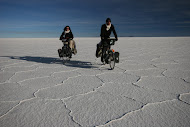Throughout January, we had the time to enjoy the landscapes of Patagonia. 1000 km in a region as fascinating leave traces and helped us to absorb the atmosphere and, I dare say, the character of this region.
But during the crossing of South Patagonia, we had the feeling of having met two very distinct characters. South of Lago General Carrera, the peaks as mythical and unaccessible as Fitz Roy and Cerro Valentin lay along the Andean chain. Those mountains are made of deep, crystalline rocks, which seem tormented and tortured, folded, distorted and recrystallised. This area exhibited no evidence of volcanism.
In contrast, north of Lago General Carrera, the landscapes and the geological character completely changed. The metamorphic rocks were replaced by volcanic rocks, some of which were very recent, as we have seen in a previous post. Moreover, from the Hudson volcano, a parade of active volcanic edifices stretches north as a string: Monte Maca, Volcan Nevado, Volcan Corvado, Chaiten and Michi Mahuida, Volcano Huequi, and Hornopiren Hualique, and the list is long to the volcan Tupungato, near Santiago. It is the southern Andean volcanic arc, segment of the "Pacific Ring of Fire”. But why is there such a difference between the north and the south of Lago General Carrera?
We interviewed Fabien Bourlon, a geologist at the Centro de Investigacion en los ecosystems de la Patagonia, in Coyhaique. Fabien explained that this difference is related to a particular global geological setting: we are just at a junction between three tectonic plates that move relative to each other (Antarctic, Nazca and South American plates). Fabien explained to us: "The Andes result from the subduction, ie the plunge, of the Nazca oceanic plate to the north and the Antarctica to the South, under the western edge of the South America plate. Very precise measurements of the movement of the tectonic plates showed that the Nazca plate moves 8 cm / year, whereas the Antarctic plate moves than 2 cm / year or less. In the case of the Nazca plate, the subduction is fast enough to generate a magmatic activity, therefore volcanism, and the seismicity is very important. In contrast, in the case of the Antarctic plate, the plunge of the plate is too slow to generate volcanic activity, and seismicity is moderate. Since we were at the junction between 3 plates, this place is called the triple point. "


You can also look at a map and compare the position of the southern Andean volcanic arc and the position of the Nazca plate and Antarctica, and you notice this coincidence. This example shows how geological phenomena observed on the surface reflect the tectonic processes on a large scale. The work of a geologist is thus the gathering of information at the surface to interpret and understand the phenomenon at a larger geological scale.
Source of figures : wikipedia

